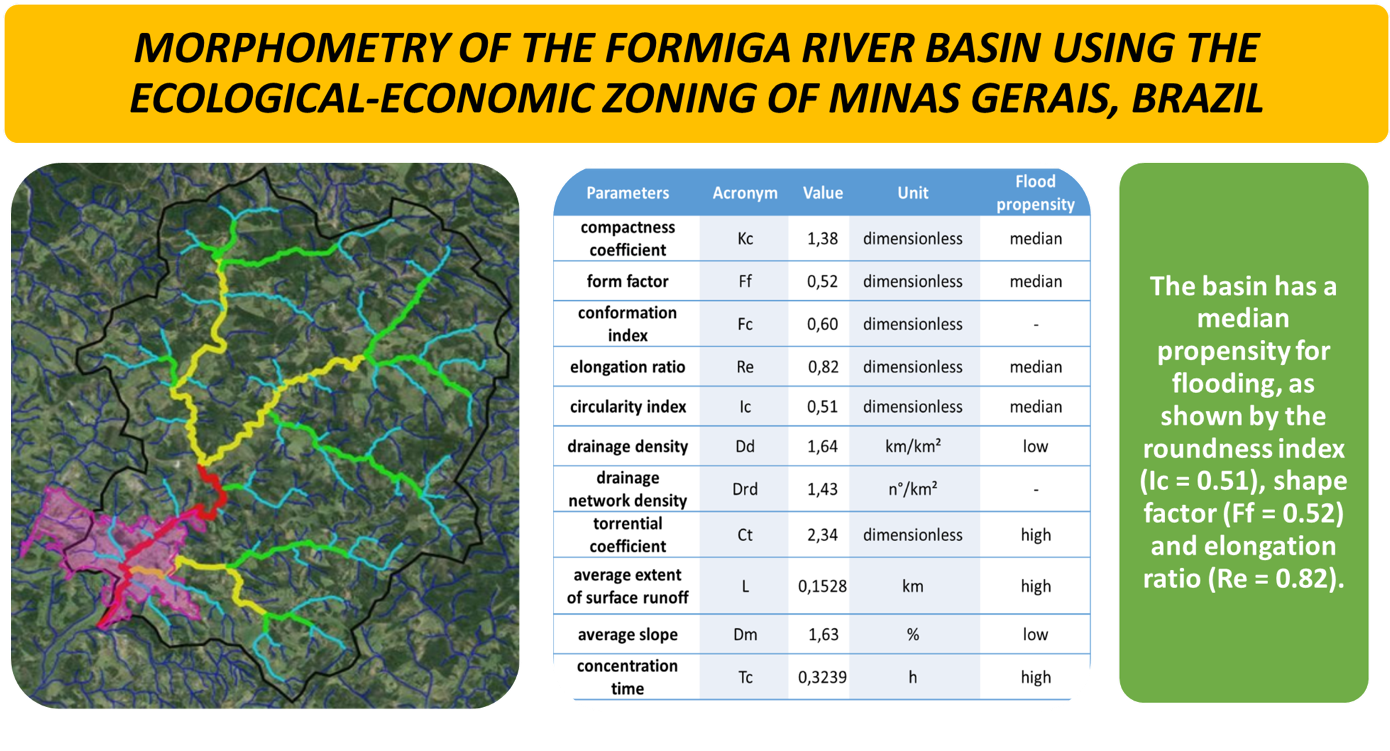MORPHOMETRY OF THE FORMIGA RIVER BASIN USING THE ECOLOGICAL-ECONOMIC ZONING OF MINAS GERAIS, BRAZIL
DOI:
https://doi.org/10.36524/ric.v10i1.2323Keywords:
compactness coefficient, drainage density, prone to floodingAbstract
Many cities, due to lack of urban planning or other reasons, constantly suffer from floods, so it is necessary to create mechanisms that help prevent these disasters. This work brings the morphometric study of the basin that influences the occurrence of floods in the urban area of the municipality of Formiga, state of Minas Gerais, Brazil, using data from the Ecological-Economic Zoning of Minas Gerais, available on the IDE-Sisema Platform, as the main tool. Geomorphometric data were collected and processed to obtain information such as area, perimeter, axial length, etc. These elements allowed the estimation of indicators of the physical and hydrological behavior of the basin, such as shape factor, drainage network density, among others. The basin has a median propensity for flooding, as shown by the roundness index (Ic = 0.51), shape factor (Ff = 0.52) and elongation ratio (Re = 0.82). This average propensity for flooding in the hydrographic basin analyzed is mainly due to its shape and the waterproofing of the soil by civil constructions on the banks of its main rivers.

Downloads
Published
Issue
Section
License
Copyright (c) 2024 Revista Ifes Ciência

This work is licensed under a Creative Commons Attribution-NonCommercial-NoDerivatives 4.0 International License.
Autores que publicam nesta revista concordam com os seguintes termos:
- Autores mantém os direitos autorais e concedem à revista o direito de primeira publicação, com o trabalho simultaneamente licenciado sob a Licença Creative Commons Attribution que permite o compartilhamento do trabalho com reconhecimento da autoria e publicação inicial nesta revista.
b. Autores têm permissão e são estimulados a publicar e distribuir seu trabalho online (ex.: em repositórios institucionais ou na sua página pessoal) a qualquer ponto antes ou durante o processo editorial, já que isso pode gerar alterações produtivas, bem como aumentar o impacto e a citação do trabalho publicado (Veja O Efeito do Acesso Livre).


